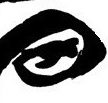The North Yorkshire Moors are seemingly covered in rocks placed by man – stones to tell you to which town you’re heading, stones to show you that you’re on the right path (for veering off into a bog or a unchartered patch of moorland could be a dangerous business), crosses and monuments; and all of that is before we even start on howes, cairns and other ancient sites.

In folklore hobs, or hobgoblins were sometimes known to dwell in such cairns, or in little hills, and you can often find references to such folktales reflected in the names of geographical features. In the stories, Atheleys is known to inhabit one such cairn, and makes vague reference to some of the other cairns no longer being inhabited (it seems hard times have come to the hobs). When Hobart Hurst dies, Maud, Eleanor and Angus take his body up onto the moors and bury him in one of the abandoned cairns. In the second book his daughter Clara has a vision of him (or sees a ghost – whichever interpretation you prefer) and has a stone commissioned to be erected in the cairn where he is buried – Hob Cross – in the year 1798. Of course, I am taking a little bit of artistic liberty here, because there really is a stone on the moors above Commondale which has Hob Cross 1798 carved into it. There’s a fine walk that can be taken around Commondale Moor which takes in both Hob Cross, with a distant view of the sea from it, and also a stone marking Hob-on-the-hill (to the right).
There are other stories of hobgoblins from the Esk valley. One is referred to when Eleanor is walking down the river valley with Hobart Hurst to a new life in Whitby. Eleanor, who is befriended by Atheleys, I like to see as a friend of the “little folk”. Between this, and what I like to imagine as the fury of hobgoblins over one of their own who was getting above his station, I imagine Hobart was nervous walking to Whitby that day. He does not dare to travel over the top of the moors at that point in the story, for fear of passing by the cairns of too many disapproving hobs. Instead he leads Eleanor by the river, although even then they must hurry past Hart Hall in Glaisdale, where a hob known for helping the farmer with his flailing of barley at night, was known to reside once upon a time. *
Having said this, perhaps Hobart was not nervous about the walk for those reasons. I like to leave it open as to whether he was a hob, or simply a peculiar little man.
*Life and Traditions in The Moorlands of North East Yorkshire, Marie Hartley and Joan Ingilby, 1972, J M Dent and Sons Ltd

